I want to be able to do the integral below completely numerically.

where  ,
,  and
and  ,
,  and
and  are constants which for simplicity, can all be set to
are constants which for simplicity, can all be set to 1.
The integral over x can be done analytically by hand or using Mathematica, and then the integral over y can be done numerically using NIntegrate, but these two methods give different answers.
Analytically:
In[160]:= ex := 2 (1 - Cos[x])
In[149]:= ey := 2 (1 - Cos[y])
In[161]:= kx := 1/(1 + Exp[ex])
In[151]:= ky := 1/(1 + Exp[ey])
In[162]:= Fn1 := 1/(2 \[Pi]) ((Cos[(x + y)/2])^2)/(ex - ey)
In[163]:= Integrate[Fn1, {x, -Pi, Pi}]
Out[163]= -(1/(4 \[Pi]))
If[Re[y] >= \[Pi] || \[Pi] + Re[y] <= 0 ||
y \[NotElement] Reals, \[Pi] Cos[y] - Log[-Cos[y/2]] Sin[y] +
Log[Cos[y/2]] Sin[y],
Integrate[Cos[(x + y)/2]^2/(Cos[x] - Cos[y]), {x, -\[Pi], \[Pi]},
Assumptions -> ! (Re[y] >= \[Pi] || \[Pi] + Re[y] <= 0 ||
y \[NotElement] Reals)]]
In[164]:= Fn2 := -1/(
4 \[Pi]) ((\[Pi] Cos[y] - Log[-Cos[y/2]] Sin[y] +
Log[Cos[y/2]] Sin[y]) (1 - ky) ky )/(2 \[Pi])
In[165]:= NIntegrate[Fn2, {y, -Pi, Pi}]
Out[165]= -0.0160323 - 2.23302*10^-15 I
Numerical method 1:
In[107]:= Fn4 :=
1/(4 \[Pi]^2) ((Cos[(x + y)/2])^2) (1 - ky) ky/(ex - ey)
In[109]:= NIntegrate[Fn4, {x, -Pi, Pi}, {y, -Pi, Pi}]
During evaluation of In[109]:= NIntegrate::slwcon: Numerical integration converging too slowly; suspect one of the following: singularity, value of the integration is 0, highly oscillatory integrand, or WorkingPrecision too small. >>
During evaluation of In[109]:= NIntegrate::ncvb: NIntegrate failed to converge to prescribed accuracy after 18 recursive bisections in x near {x,y} = {0.0000202323,2.16219}. NIntegrate obtained 132827.66472461013` and 19442.543606302774` for the integral and error estimates. >>
Out[109]= 132828.
Numerical 2:
In[113]:= delta = .001;
pw[x_, y_] := Piecewise[{{1, Abs[Abs[x] - Abs[y]] > delta}}, 0]
In[116]:= Fn5 := (Fn4)*pw[Cos[x], Cos[y]]
In[131]:= NIntegrate[Fn5, {x, -Pi, Pi}, {y, -Pi, Pi}]
During evaluation of In[131]:= NIntegrate::slwcon: Numerical integration converging too slowly; suspect one of the following: singularity, value of the integration is 0, highly oscillatory integrand, or WorkingPrecision too small. >>
During evaluation of In[131]:= NIntegrate::eincr: The global error of the strategy GlobalAdaptive has increased more than 2000 times. The global error is expected to decrease monotonically after a number of integrand evaluations. Suspect one of the following: the working precision is insufficient for the specified precision goal; the integrand is highly oscillatory or it is not a (piecewise) smooth function; or the true value of the integral is 0. Increasing the value of the GlobalAdaptive option MaxErrorIncreases might lead to a convergent numerical integration. NIntegrate obtained 0.013006903336304906` and 0.0006852739534086272` for the integral and error estimates. >>
Out[131]= 0.0130069
So neither of the numerical methods give -0.0160323. I understand why - the first method has trouble with the infinities caused by the denominator, and the second method effectively deletes the part of the integral that is causing problems. But I'd like to be able to integrate another integral (a harder one over x, y and z) which can't be simplified analytically. The above integral gives me a way to test any new method since I know what the answer should be.
